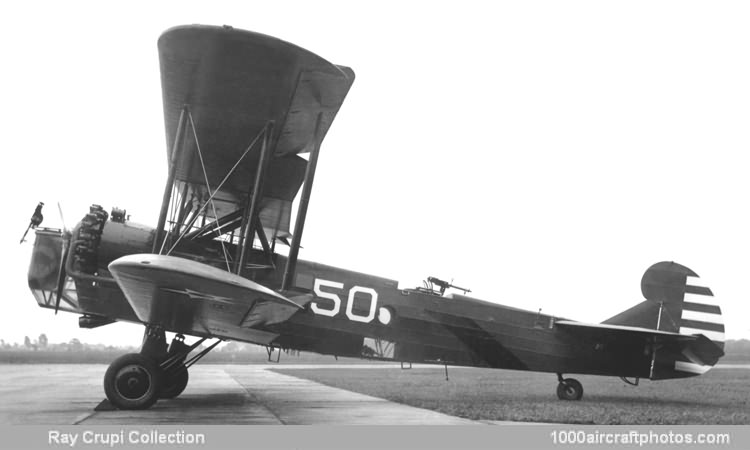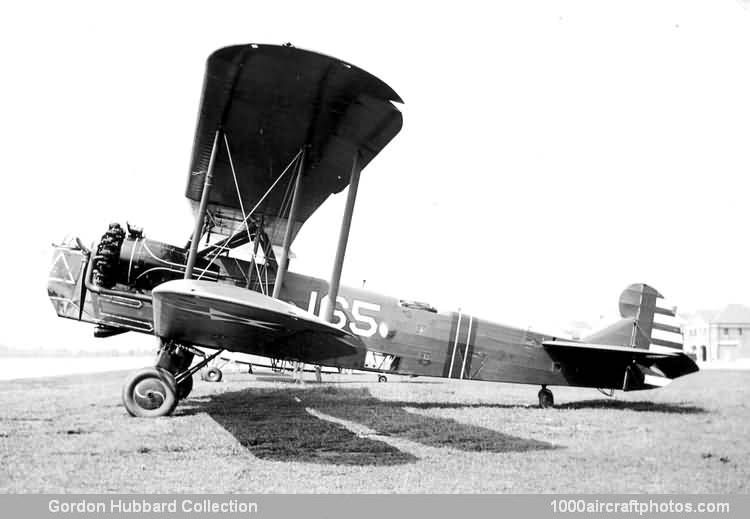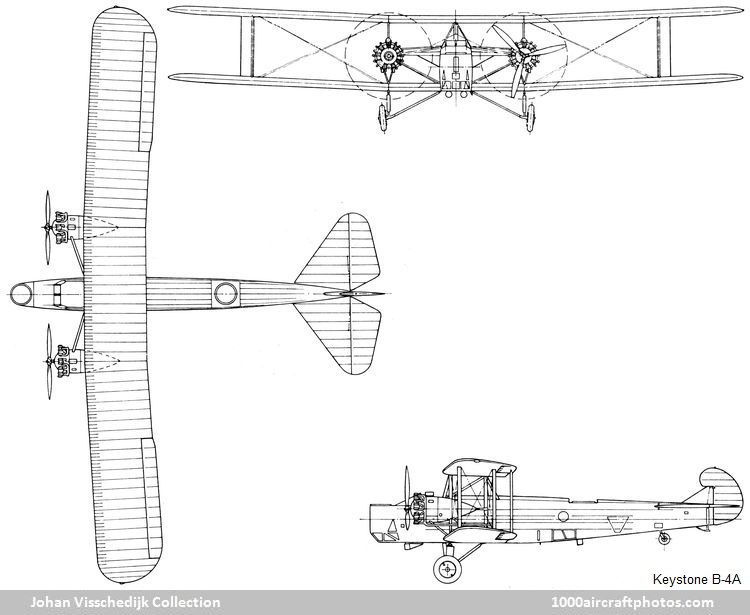RAY CRUPI COLLECTION
No. 11075. Keystone B-4A ("50") US Army Air Corps
Source unknown
12/31/2011. Remarks by
Johan Visschedijk: "A biplane bomber series that was to span a decade began in 1923, with an order for the Huff-Daland XLB-1 (s/n 23-1250), a normal three-seat bomber that differed from convention only in being fitted with tapered wings and a single 800 hp Packard 1A-2540 engine in the nose instead of the traditional pair of lower-powered engines, one on each side of the fuselage between the wings. Bombs were carried internally, and aiming was done through a window in the belly instead of from the normal nose sighting station.
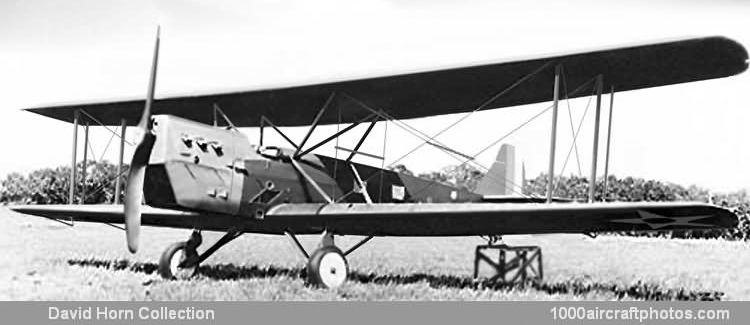
Huff-Daland LB-1 (26-380) (
David Horn Collection)
Nine service test LB-1s (s/n 26-377 to 26-385) were identical to the XLB-1 except for installation of an improved 2A-2540 engine.
This single-engine configuration proved to be unsuitable, and a twin-engined XLB-3 (s/n 27-333) was ordered. This was essentially an LB-1 airframe powered with experimental air-cooled and inverted Liberty engines, one on each side. This power plant installation was abandoned, however, and the same aircraft became the XLB-3A, with 410 hp Pratt & Whitney Wasp R-1340-1 engines. Crew was increased to five, with conventional nose gunnery and bombing stations.
By the time the XLB-3A was delivered, the Huff-Daland and Co. Inc. at Ogdensburg, New York had been reorganized in 1927 as Keystone Aircraft Corp. at Bristol, Pennsylvania, so the aircraft was known as a Keystone.
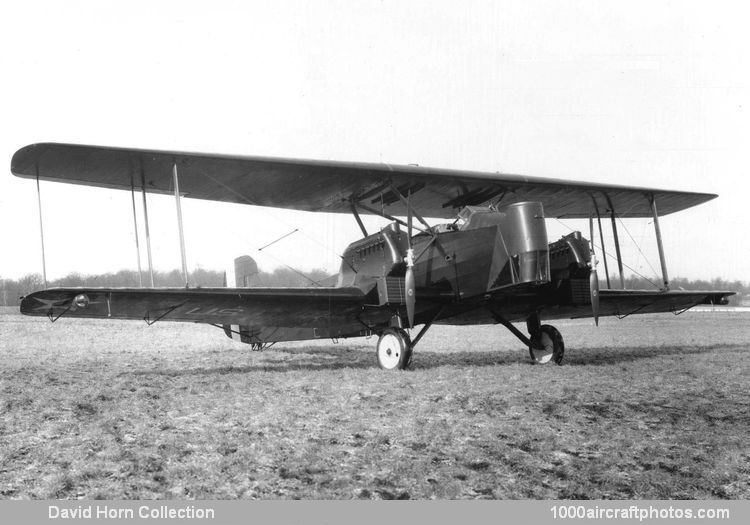
Huff-Daland XLB-5 (26-208) (
David Horn Collection)
The XLB-5 (s/n 26-208), similar to the XLB-3A except for conventional 420 hp Liberty engines, was delivered before Huff-Daland was reorganized as Keystone Aircraft Corp. Subsequently it went to McCook Field, Dayton, Ohio, initially under the Project Number P-453 and later as P-509. It crashed and was written off at Reynoldsburg, Ohio on May 28, 1927, the crew bailed out.
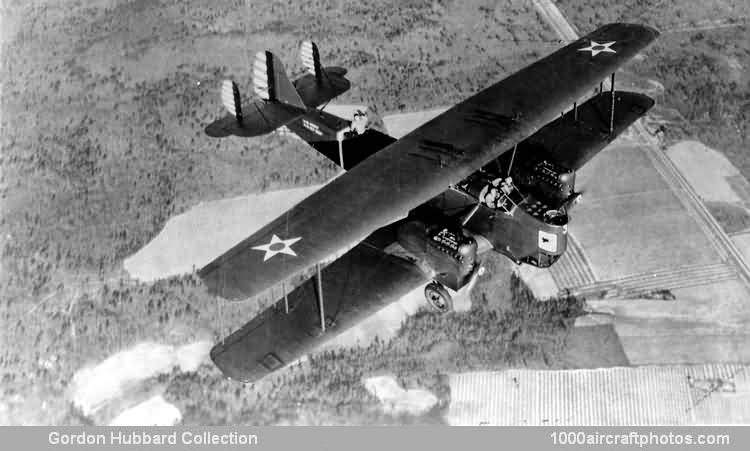
Huff-Daland LB-5 (
Gordon Hubbard Collection)
The ten production LB-5s (s/n 27-335 to 27-344) were also delivered before the company became Keystone Aircraft Corp.
Twenty-five LB-5As (s/n 28-001 to 28-025), however, with twin tails instead of the single large rudder with two smaller rudders on each side as used on the LB-5s, were delivered as Keystones, as were all succeeding variants of the LB family.
A major change took place with the appearance of the XLB-6 (s/n 27-344), which was the tenth LB-5 fitted with entirely new straight-chord wings with 525 hp Wright R-1750-1 Cyclone engines suspended between the wings instead of resting on the lower. The 17 production LB-6s (s/n 29-011 to 29-027) were the same except for minor refinements and a revised angular shape to the twin rudders. The XBL-6 and BL-6 were named Panther by the Keystone company
The LB-5s and LB-6s entered service with squadrons of the 2nd Bomb Group, which was the sole US-based bombing unit of the USAAC until 1928. Other aircraft of the same type were used by the 5th Group (Composite) in Hawaii.
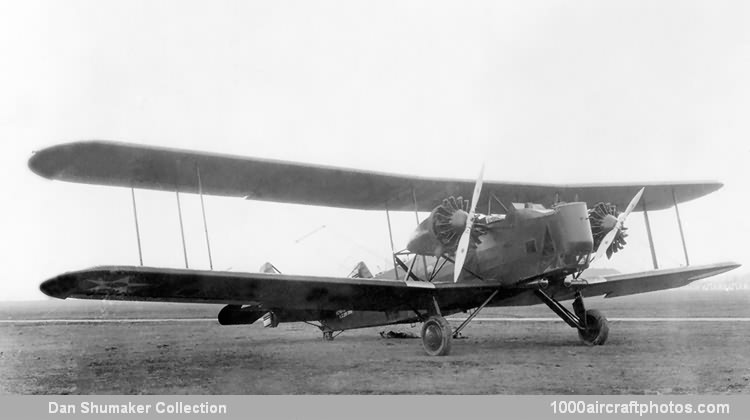
Keystone LB-7 (28-388) (
Dan Shumaker Collection)
They were supplemented by 18 LB-7s (s/n 28-388 to 28-395, 29-001 to 29-010), produced by Keystone in 1928-1929 with Pratt & Whitney R-1690-3 Hornet engines but otherwise identical with the LB-6s.
Changes of power plant and some variation in tail shape were wholly responsible for a number of different designations applied to the Keystones in this period. The final two LB-7s on the 1929 contract, for example, were completed as the LB-8 (s/n 29-9) and the LB-9 (s/n 29-10) when fitted, respectively, with geared 550 hp Pratt & Whitney R-1860-3 and 575 hp Wright R-1750 Cyclone engines.
The last two LB-6s were similarly completed with experimental engine installations, 525 hp R-1750-1s in the LB-10 and R-1750-3s in the LB-11. The LB-10 also had a single fin and rudder in place of the twin units which Keystone had standardized in the LB-5As. The LB-11 was converted to LB-11A when fitted with geared GIR-1750 Cyclones and a single LB-12 was similar to the LB-7.
In 1930, the USAAC abandoned its separate designation categories for light (LB) and heavy (HB) bombers and introduced a single bomber (B) category. At that time, production contracts had been placed for a further 73 Keystone bombers as LB-10A, LB-13 and LB-14, but all were redesignated for delivery in the B category.
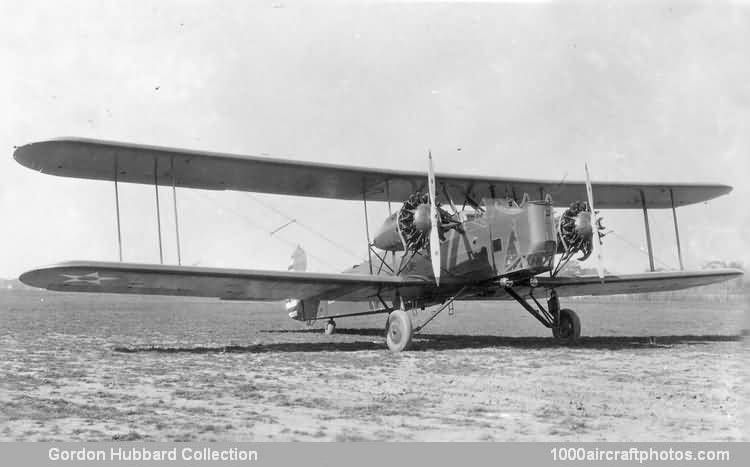
Keystone B-3A (30-281) (
Gordon Hubbard Collection)
The 63 LB-10As appeared as B-3As (s/n 30-281 to 30-343), with the same single fin as the LB-10, and 525 hp R-1690-3 Hornet engines. Of seven LB-13s ordered, five were completed as Y1B-4s (s/n 30-344 to 30-348) with R-1860-7 engines and the other two as Y1B-6 (s/n 30-349, 30-350) with R-1820-1 engines; three more Y1B-6s (s/n 30-351 to 30-353) were converted from B-3As.
The three LB-14s were redesignated Y1B-5 before delivery, with R-1750-3 engines, but it is uncertain whether they were ever completed.
Keystone B-6A (32-165) (
Gordon Hubbard Collection)
The B-3, B-4 and B-5 versions all had single fins and rudders, and production quantities of each were ordered; 25 B-4As (32-117 to 32-141), 27 B-5As (converted from B-3As) and 39 B-6As (s/n 32-142 to 32-180), with deliveries concluding in 1932. They flew with units of the 7th and 19th Bomb Groups, formed in 1928, in addition to the original 2nd Bomb Group and units overseas."
Created December 31, 2011
